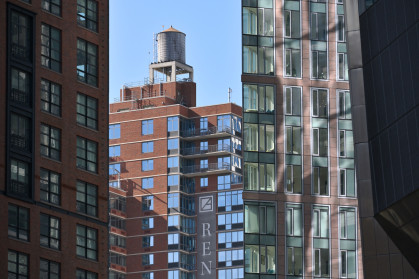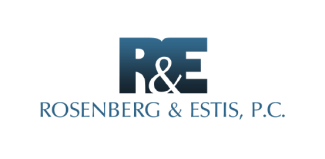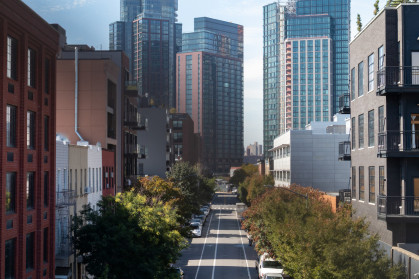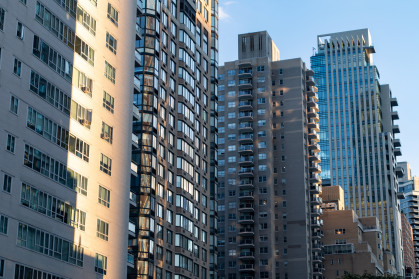Financing options to help NYC buildings comply with Local Law 97 emissions limits (Part II)
- Building owners can get long-term, fixed-rate financing through the PACE program
- Electrification projects in low-income areas may qualify for 1.5 percent fixed-rate loans
- Utility companies offer financial incentives to market-rate and affordable housing owners

"Building owners, co-ops, and condominiums should promptly implement a compliance plan, if they have not already done so, to address how to pay for the needed capital improvements,” says Adam R. Sanders of Rosenberg & Estis.
iStock
The party’s over. On January 1st, 2024, New York City condo and co-op board members will wake up to a sobering reality: the beginning of the compliance period for Local Law 97’s strict energy emissions levels.
Even more pressing than forming a compliance plan is coming up with a way to pay for it.
“Given the potential financial impact of Local Law 97, building owners, co-ops, and condominiums should promptly implement a compliance plan, if they have not already done so, to address how to pay for the needed capital improvements,” says Adam R. Sanders of New York City real estate law firm Rosenberg & Estis.
Below are several programs that can help your building pay for Local Law 97 upgrades.
[Note: This is Part II of a three-part series on helping NYC co-ops and condos comply with Local Law 97. You can read Part I: “Local Law 97 kicks off this January. Is your building on track."]
Property Assessed Clean Energy (PACE)
The Property Assessed Clean Energy (PACE) financing program assists building owners with long-term, fixed-rate financing, with rates currently around 5-6 percent. This can be used for capital improvements that reduce utility costs, energy consumption, and greenhouse gas emissions.
It’s different from traditional financing in that it stays with the building, not the specific owner, says Michael T. Carr, a real estate attorney at Rosenberg & Estis.
“PACE financing is solely tied to real property, and the loan is repaid by the borrower through a charge intended to be included on a property tax bill for the property,” Carr says. This means the loan is transferred when the property changes ownership.
While the loans are publicly recorded in land records, they do not create a lien on the property and are not subject to a mortgage recording tax, which results in significant savings, he explains.
Community Decarbonization Fund
The NY Green Bank has launched a $250 million Community Decarbonization Fund (CDF). The CDF supports local clean energy and building electrification projects primarily located in low-income, disadvantaged census tracts that reduce greenhouse gas emissions by providing low-cost capital to qualified Community Development Financial Institutions lenders.
The loans range from $2 million to $25 million or 20 percent of an eligible borrower’s total capitalization, whichever is less, and come in the form of a 12-year loan at a fixed rate of 1.5 percent.
Inflation Reduction Act
The Inflation Reduction Act (IRA) provides $8.8 billion in funding to reduce energy consumption in multifamily buildings.
Building owners with residents considered low or moderate-income can receive rebates for the purchase and installation of clean energy upgrades, with a total cap of $14,000 per dwelling unit.
“Notably, it is not only building owners who are eligible to receive rebates through this program,” Sanders points out, “but also individual unit owners making upgrades to their own dwellings. Furthermore, building owners making energy-efficient improvements to their properties may qualify for tax deductions.”
Utility company incentives
Con Edison, National Grid, and other utility companies provide financial incentives to reduce carbon emissions for market-rate and affordable housing multifamily building owners.
For market-rate properties, the Multifamily Energy Efficient Program (MFEEP) provides payments for owners looking to install energy-efficient equipment in their buildings. MFEEP eligibility is restricted to buildings utilized for residential purposes and excludes new construction projects. Note, however, that the incentives are taxable by the IRS.
Similarly, the Affordable Multifamily Energy Efficiency Program (AMEEP) offers eligible building owners financial incentive payments for installing energy efficient equipment to projects in which at least 25 percent of the units occupied by households earning less than 80 percent AMI.
Coming up next in Rosenberg & Estis’ in this three-part series: real estate attorneys Adam R. Sanders and Michael T. Carr detail specific financing obstacles for NYC co-ops and condos attempting to reach Local Law 97 compliance levels.
Michael T. Carr and Adam R. Sanders are attorneys at Rosenberg & Estis, a top New York City real estate law firm. Rosenberg & Estis provides full-service representation and advice to co-op and condo boards, owners, developers, sponsors, and more.
Sign Up for our Boards & Buildings Newsletter (Coming Soon!)
Thank you for your interest in our newsletter. You have been successfully added to our mailing list and will receive it when it becomes available.




















